‘We have to keep people safe’: Hawkeyes at the heart of University of Iowa’s COVID-19 response
Administrators have had practice leading through crises before, and it helped them come together to respond to COVID-19 as a team.
May 13, 2020
University of Iowa President Bruce Harreld was searching for a guiding star in March to lead the institution through the COVID-19 pandemic amid a horizon filled with uncertainty.
As the number of novel coronavirus cases first began to rise in Iowa, the 21st UI president met with the deans March 11, the Wednesday before spring break. At this meeting, Harreld said, he could see his collegiate leaders wrestling with how to minimize the virus’ upheaval on campus operations — the financial toll, the human impact.
“What we’re doing is trying to trade off things,” he told The Daily Iowan, recalling his struggle to come to terms with the tough decisions that lay ahead of him and his team. “I kind of pounded on the table to make it very clear that we are going to do a lot of damage to a lot of things across the institution, but the one thing we’re not going to do damage to are the people.
“We are going to make sure our students are safe, our faculty is safe, and our staff [is] safe. If we need to go into our homes, we are all going to go into our homes. If we’re going to have to teach online, then we’re going to teach online. And if we have to cancel graduation, we will have a virtual graduation. It’s terrible, but we have to keep people safe.”
Once I got fixed on the guiding principle in the middle of March, I will say things didn’t get easier but they got clearer. I don’t think people come here as students or join our institution as faculty or staff or anything else to put themselves in harm’s way.
— Bruce Harreld, UI president
As President Emeritus Sandy Boyd often said, it’s the people, not the buildings, that make the UI great.
So, Harreld and the UI team set out to keep Hawkeyes at the heart of the university’s response to the unprecedented COVID-19 public-health crisis.
“As you’re moving through a situation like this, what are we focused on optimizing? What’s the one thing we have to make sure we get right?” Harreld said. “… Once I got fixed on the guiding principle in the middle of March, I will say things didn’t get easier but they got clearer. I don’t think people come here as students or join our institution as faculty or staff or anything else to put themselves in harm’s way.”
Since the first case of the virus was identified in Wuhan, China, in November, the UI has made sweeping operational changes in a matter of months, sometimes days, to keep the Hawkeye community safe — recalling students from study-abroad programs, shutting down campus buildings, canceling events including commencement, moving students out of residence halls, and switching to entirely virtual instruction.
Though these actions all made for a jarring change from typically vibrant campus operations, this isn’t the first time the UI has responded to a crisis. Having most recently faced the 2008 flood, the university has fine-tuned its reaction to emergencies, Senior Vice President for Finance and Operations Rod Lehnertz said. Away from campus in his temporary home workspace, Lehnertz oversees university operations with his seven-pound dog Swift (named after chart-topping musician Taylor Swift) nearby.
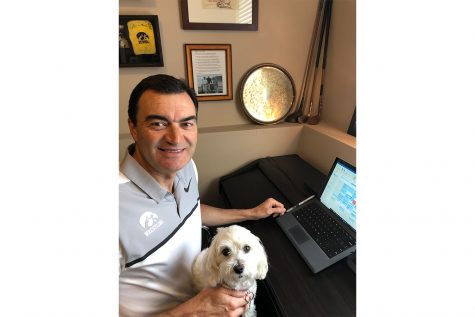
UI officials created the Critical Incident Management Team to chart the UI’s course to coordinate with constituents across campus to plan and make operational changes amid disasters. The group brings together leaders from key campus units and central administration who are tasked with protecting human life and restoring normal operations amid a crisis.
This includes crises that can’t be seen, such as COVID-19.
Sitting in a “pretty confining” closet inside his home that’s been converted into a miniature sound studio, Lehnertz said via a Skype video interview that the UI handled COVID-19 effectively out of the gate because of lessons learned from the flood. It was a time to come together as a university to problem-solve — of lacking answers but searching for solutions, he said.
The flood hit the eastern Iowa region, including Iowa City, hard. It took eight years for the UI to cross off each step toward recovery — reviving classroom spaces, rebuilding portions of the IMU, completely reconstructing Hancher Auditorium and a new home for the School of Music in Voxman. But Lehnertz said the university emerged better and more prepared once the recovery efforts wrapped up.
With COVID-19, the UI isn’t alone in its experiences the way it was during the flood. It’s among many institutions and Hawkeyes are among millions of people across the globe whose lives have been altered because of the pandemic, leaving everyone to wrestle with unknowns while experts race to learn more about the virus.
“… Those kinds of less than predictable crises are ones that, even as we get through this, we can’t say, ‘And now bring it on. Let’s have another one like that, because we will tackle it.’ We don’t know what it will be,” Lehnertz said. “What we do know is we’ll be ready as an institution to organize on behalf of the institution and its students, and its faculty, and its staff, and I’d say do so better than other institutions because, whether it’s a good thing or a bad thing, we’re good at it because we’ve done it.”
Watching the world and waiting
Iowans watched the coastal coronavirus activity and waited in the Heartland for it to reach Middle America.
The coronavirus crept toward the Hawkeye State slowly — first spreading from China in November, then beginning the global outbreak as cases were confirmed in Japan, Thailand, and South Korea on Jan. 20. By Jan. 21, the first case in the U.S. was identified in Washington state, and within weeks New York became another U.S. epicenter for the virus’ spread.
At that time, Russ Ganim had just transitioned Jan. 1 to his new role as International Programs dean, only three weeks before the UI would send its first message to international students and scholars on Jan. 23 regarding the institution’s awareness of COVID-19.
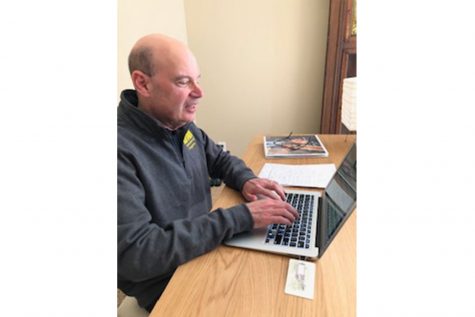
Keeping in touch with students and alumni in the virus’ first epicenter in Wuhan, Ganim said he gained an understanding early on of some of the public-health measures taken there to address COVID-19, such as contact-tracing with people who may have come into contact with individuals who have tested positive.
The former director of the Division of World Languages, Literatures, and Cultures traveled to China off and on for the last decade, so he said it’s not uncommon for visitors to have their temperature taken or to be called aside for special screening. Those initial measures didn’t alarm him.
“Some of us who had been through those experiences previously thought, ‘OK, well this might be like SARS or H1N1 where this is serious, but we’re not at the level of a global pandemic,’ ” he said. “Well, it turned out that the coronavirus was very serious, and that it spread on a scale that I don’t think anyone could have imagined in January.”
That month, UI Emergency Management Director Anna Lumpkin said the Critical Incident Management Team began working with UI Health Care’s Bioemergency Response Team to gear up on the medical side of the institution, and then with the university’s in-house epidemiological experts.
The Critical Incident Management Team was not formally activated until March 2 and first met in-person the next day, but the campus-wide coordinated coronavirus workgroup began meeting several times a week Jan. 27.
“We learn from the other states. We learn from the other institutions. We’ve learned from everyone that had this first before us,” Lumpkin said of the early days of the university’s COVID-19 response. “And that’s an important component, is reaching out to our partners, understanding lessons learned, what didn’t work, and being prepared for when it happened here.”
The UI had just begun communicating with the campus community about its understanding of and resources to combat the coronavirus in January. But after the initial outreach, for almost a month, at least outwardly, the university remained mum on its COVID-19 response.
Soon, the situation began to spiral across the globe. Reports emerged from Italy of hospitals that were overflowing with too many COVID-19 patients and too few beds, of newspaper obituary sections packed with more than double the usual amount of tributes to the dead as world leaders struggled to keep up with the coronavirus’ rapid spread across borders.
Ganim said that’s when it became clear the world would have to grapple with a pandemic.
Interactive timeline: The UI administration’s response to COVID-19
Timeline by Kelsey Harrell/The Daily Iowan
The UI canceled CIMBA Italy, its popular study-abroad program geared especially toward business students, on Feb. 28 as the Centers for Disease Control and Prevention and the State Department issued travel advisories warning of the risk of venturing to the country. Then, within a week came the decision to recall students studying abroad in Japan and the state Board of Regents banned international travel for all faculty, staff, and students.
The people on the UI’s coronavirus work group transitioned to the Critical Incident Management Team when Lumpkin activated it March 2, less than a week before officials confirmed the first COVID-19 cases in Iowa.
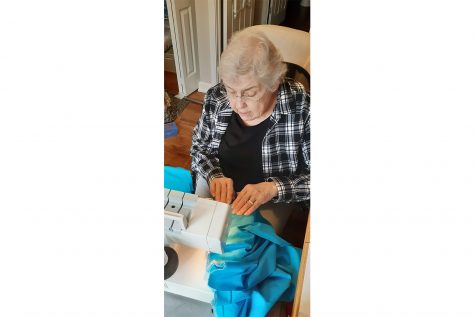
By March 8, when Gov. Kim Reynolds reported three Iowans were infected with the virus, the world had seen nearly 110,000 confirmed cases and just under 3,900 deaths from the disease.
Since then, there’s been push and pull between the state and Johnson County officials as the Board of Supervisors has urged Reynolds to issue a shelter-in-place order with more stringent restrictions on movement within the state to keep people at home and ensure social distancing.
Iowa’s Republican governor refused to issue one, but maintains she took the steps of such an order by ordering schools, restaurants, and nonessential businesses to close.
As politics played out between the state and its 99 counties, the Hawkeye team remained focused on helping Hawkeyes stay safe and healthy through their collaborative emergency-management structure.
It’s this collaboration that’s contributed to a successful COVID-19 response so far, said Lumpkin, whose central role involves coordinating with local, state, and federal agencies, including the Iowa Department of Public Health and CDC.
“If the law requires it, then we have to make sure we’re in compliance with it… So, you know, I decide to put all politics aside, so we just do what we have to do,” she said.
UI team comfortable in crisis mode
The month of March seemed to last for years as UI leaders said they worked around the clock to keep up with the flow of constantly changing information.
No matter the mandate, the Critical Incident Management Team has kept the UI functioning through the onset of the public-health threat and is now composed of different planning teams. These groups work to coordinate health and safety procedures, classroom sizing and scheduling, information-technology support, human-resource policies, facilities maintenance, finance/budget, and research.
Just three days after Reynolds announced Iowa’s first cases, all three in Johnson County stemming from travel on an Egyptian cruise, the UI on March 11 canceled study-abroad programs in Spain, France, and Germany, before pulling Hawkeyes out of 26 other countries with a CDC-level 3 travel advisory.
Students and parents were concerned about the risks associated with travel, Ganim said. Those returning from abroad feared becoming infected with COVID-19 by remaining in high-risk countries, and they feared coming back to the U.S., which seemed to grow more unsafe as Americans saw the virus beginning to surge here as well.
“While it was certainly regrettable that the student experiences — many of which can’t be replaced — had to be cut short, we felt that the health and security of our students was really the only priority, and that’s what guided our decision-making process,” Ganim said.
Hawkeyes already at home in Iowa City would soon see a shakeup to their semester as well.
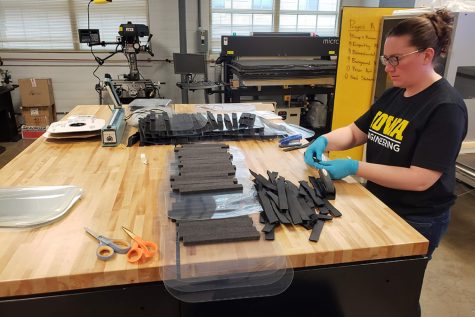
University College Dean Tanya Uden-Holman remembers when it sunk in that COVID-19 would have far-reaching implications for the UI.
She spent her birthday, March 9, meeting with all of the colleges to discuss their plans for moving to online instruction — a day before the regents directed the universities to prepare for the “eventuality” of a switch. Uden-Holman works on the planning group within the Critical Incident Management Team.
“It really hit me,” she said. “And as we started working with the colleges on their communications for their faculty, staff, and students, put in some really long days… It almost in some ways seems surreal at times.”
On March 11, the UI shared plans to move instruction entirely online for at least two weeks after spring break beginning March 23. University leaders had been quietly preparing for the move to distance learning, with no formal announcement until March 11 and the only visible sign of shifts before then coming from the regents’ directive and from a March 4 Tippie College of Business email to students warning them of the possible change to come.
Already strong in its distance-learning offerings coming into the COVID-19 response, the UI integrated its Information Technology Services through a regent-led efficiency review in 2015. The move prepared it to embrace the large-scale move to online education this spring.
Executive Vice Provost and Senior Associate Provost for Faculty Kevin Kregel, who leads the Critical Incident Management Team’s planning group, said the UI was well-equipped for the transition thanks in particular to the Office of Teaching, Learning and Technology and the Center for Teaching.
“We have the infrastructure. We have the expertise. These are two offices that have really talented people, so faculty have already been engaged with those processes,” he said. “Now, the challenge in mid-March was to be able to serve a much larger clientele over a short period of time.”
At the time, Lehnertz said UI officials knew enough to understand they didn’t know enough. By taking incremental steps to move online, he said the UI wanted the ability to more easily revert back to face-to-face instruction should COVID-19 “clear up.”
As cases in Iowa and across the U.S. continue to surge, administrators decided the UI needed to continue offering instruction virtually for the whole semester and, later on, through all five summer class sessions.
The timing coincided with spring break on the week of March 15, as the UI made the final call to send Hawkeyes home from residence halls and to end in-person instruction March 18.
“That meant two things: The campus was primarily empty, and it also meant that it gave us a very valuable week of spring break to convert classes that had not been virtual to a temporary virtual format,” Lehnertz said.
The change in instructional methods has come with flexibility in course-grading options. Hawkeyes could already opt to take courses pass/nonpass before the pandemic, but the UI extended the deadline to take advantage of that grading option through MyUI to May 8.
Colleges backed the decision, Uden-Holman said, allowing students to satisfy general-education requirements and prerequisites with courses taken as pass/nonpass. Given the abrupt midsemester campus shutdown and other life disruptions students are facing, she said this option was especially important for students.
“I thought that was a great example of coming together and really doing what was in the best interest of students,” she said.
Students and faculty, especially those in more hands-on fields such as lab sciences and the arts, have reported some hiccups with the instructional switch.
Dance students don’t have the same space in which to practice freely, music students are struggling with lower sound quality while learning over Zoom, and students studying in lab-based courses aren’t able to complete important experiments and projects in a physical environment.

Despite the obstacles, Kregel and Uden-Holman said Hawkeyes rose to the occasion to get creative with the classroom experience.
“The faculty met the challenges and students understood and accepted the limitations that were thrown their way,” Kregel said.
Faculty have approached teaching with a “we’re-going-to-make-it-work” attitude, Uden-Holman said. Students have followed suit to persist in their education.
“Some of [the students] stayed in Iowa City, others went home. Some of them lost jobs, some of their parents lost jobs,” she said. “And so, the fact that they were resilient and continued learning sometimes in difficult situations, I think that they really deserve to be recognized for that as well.”
Normally, this time of year brings the campus community together to celebrate the end of another academic year, and especially to send off those finishing their college careers. On sunny May days, soon-to-be alums donning black and gold still flock to the Pentacrest to take photos with their friends and pop open champagne bottles on the Old Capitol steps despite social-distancing guidelines.
Some are clinging to the graduation-season traditions, but thousands of Hawkeyes will fly out of the nest this weekend without walking across the commencement stage. The traditional celebrations will now take place online, though graduates may return to partake in in-person commencement in December or in spring 2021.
While it was a tough call to make, Uden-Holman said, the university’s guiding principle — the health and safety of students, faculty, and staff — pushed the UI to make the right decision.
“It was a really difficult decision because commencement is like the culmination of your time with us and it’s a time of the year that we all love, being able to see our students and your families and friends come together, so it was a decision that everyone took really seriously,” she said. “We just knew that we couldn’t safely do it in person — that just was not going to happen.”
Hawkeyes look to uncertain future
Tell Harreld where the virus will go next, and the UI will figure out its next steps, the head Hawkeye challenged rhetorically.
That’s something even the experts can’t do just yet.
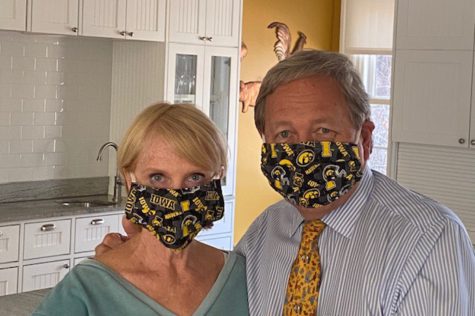
For now, Harreld told the DI that his days consist of strange and bizarre meetings facing his computer screen instead of people. He’s a leader whom many have praised as team-oriented, now leading without his team physically by his side.
The UI president, now wrapping up his fourth full academic year at the institution’s helm, said he thinks of advice from one of his mentors about how great leaders respond to a crisis: They deal with it, and they prepare for the future.
“… New opportunities emerge from a situation like this,” he said. “And so I’m trying to — we’re trying to — balance both of those at the same time.”
Kregel, who still reports to work to his now-empty Jessup Hall office, said this is a once-in-a-century opportunity to change for the better. He pointed to the integration of online-learning opportunities in a hybrid setting as one such possibility to seize upon and thrive in.
Concrete plans for the fall semester are still in the works, but administrators have said university operations will likely emphasize social distancing and offer more distance methods of instruction in case of another surge in COVID-19 cases.
“This is just my perspective, but institutes of higher education generally don’t change,” Kregel said. “There’s a lot of inertia. They don’t change unless there’s a reason, and we obviously have a reason now.”
While UI leaders reckon with an uncertain future, they will be forced to grapple with a projected $76 million in expenses and revenue losses through August and another $70 million for UIHC through April, with only $16.2 million from the federal Coronavirus Aid, Relief, and Economic Security Act to fill the gap. Harreld said all options are on the table to address the shortfall — salary reductions and hiring freezes among them.

Tough calls are ahead, but as these leaders have overcome the onset of the pandemic, they said the university community’s collaborative nature has emerged clearly.
“It would have been very easy for people to become siloed or to think, ‘Oh, this is my turf,’ and that just didn’t happen,” Uden-Holman said.
In his makeshift sound studio and as he roamed around his basement later in the call, Lehnertz reflected on Hawkeyes’ collaboration amid crises quietly while his daughter took an online test upstairs.
Lehnertz led campus through the 2008 flood recovery efforts — he knows a few things about rebirth after devastation. As the COVID-19 pandemic unfolds and UI leaders tread on a path with no clear final destination, Lehnertz said past crises have proven to be opportunities to rebuild what was damaged and make it stronger than it was at the start.
When the UI emerges from COVID-19, the campus will be better for it, he said — as will the Hawks who have helped fellow Hawks in the unforgettable year of 2020.
“… With the stresses we have going on, we also see those moments where people have remembered things they had forgotten about — being generous and being kind and reaching out, even if it has to be virtual,” he said. “I think a silver lining in all of this is we may have a society that’s ready to remember how to care for one another, more than would have been the case before this, and I’m hoping that those lessons we learn will stick.”
